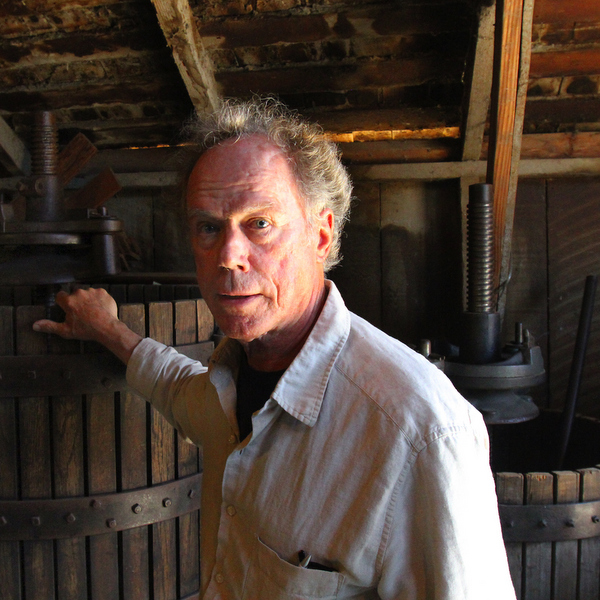By KATIE WATTS / Petaluma Towns Correspondent
If California were a separate country, wrote Tom Stevenson in Sotheby’s Wine Encyclopedia, it would be the world’s fourth-largest wine producer.
So why, asks Petaluma antique dealer and collector Jim McCormick, is there no California wine museum?
He first wondered that more than two decades ago while buying and selling corkscrews, a hot commodity in the antiques business. “The next thing I knew I was buying wine stuff—because this is wine country. And then, one day, this museum idea came to me.
“It’s robbing Peter to pay Paul. I make the money to buy a wine press by selling a chair.” He says his is probably the largest collection of wine-related items in the world. “It took control of me.”
McCormick, 70, was in the right place at the right time with the right skills: background in advertising and marketing, strong interest in wine, exhaustive knowledge of antiques and years spent running a furniture restoration business.
Although his museum isn’t open to the public, part of his collection, photographed by him, appears in the upcoming book “Wine Antiques and Collectibles” by Donald A. Bull and Joseph C. Paradi. In addition to the photos, McCormick—who notes he’s known in the field as “The Wine Guy”—was asked to write the forward.
He gestures around his “press room,” one of a series of former chicken coops west of Petaluma which house the majority of his finds. “Oak holds up,” he says of the wood used to manufacture the grape presses, “but a lot of early presses were old heart redwood.” He wrinkles his nose, pondering what flavor redwood might impart to wine. “Those early wines: they were wines to get drunk on. It took California wines a long time to get good.” Higher quality, he explains, was one reason the California Wine Institute and California Wine Association were created.
The wine industry in this country, he says, began in upstate New York, expanded to Ohio and then to California. “I’ve covered every aspect of early wine growing and making, “from vineyard to wine cellar to table.” That includes a windmill. “You needed water to run a vineyard,” he reminds, “to pump the water.” And yes, McCormick also has the pumps.
Other items include a smudge pot used to protect vines during freezes, viticultural tools, harvesting baskets, wine and grape scales, crushers, destemmers, wine buckets, graphics including early vineyard advertising and ephemera, photographs, a collection of more than 900 corkscrews and even a vineyard wagon.
Labels are stored in a studio with the more valuable and delicate items. Many come from San Francisco’s original Poodle Dog restaurant, which operated from the 1850s through 1911. They had a massive wine list, he says, and their labels include vintages from the 1830s and 1840s. Thousands more were donated by an older New England collector who feared his children would throw them away.
And of course there are all shapes, sizes and colors of wine bottles.
McCormick also has a 1922 Petaluma farm truck, “the same vehicle you see in the ‘Beverly Hillbilles’—originally an Oldsmobile touring car.”
This is difficult stuff to find, he says. With his background, he’s been able to restore each piece so all are functional. Salvaging such items is not easy work. “When you get these, they are so greasy and dirty.” To rebuild the often large, heavy equipment is expensive, McCormick continues. “I prefer to get them in salvageable condition—but so many just sat out in the fields.”
Each piece, large and small, is catalogued and inventoried. Many can be viewed during a virtual tour at californiawinemuseum.com.
What he hopes is that his carefully selected and cared-for collection can become the real museum he’s dreamed for so long. He visualizes the museum as a destination point, and would like it to stay in Sonoma County. He verbally sketches it out: a hands-on museum housing the collection, an area for lectures and symposiums, a library, perhaps a restaurant.
“I can’t do it,” he says. “I don’t have the money. But this stuff needs to be seen. Imagine operating this type of equipment, the primitiveness of the systems, the sheer amount of work, the labor, the struggle of wine. That’s what I wanted to capture, especially the efforts by the Chinese. [The California wine industry] could never have happened without that labor force.”

